The conditions of use of the car are constantly changing over a wide range, which requires a considerable range of variation in traction and speed. However, the piston type internal combustion engine widely used in modern automobiles has little change in torque over the entire speed range, but the power and fuel consumption rate change greatly, so that the engine power is large and the fuel consumption rate is low. The range of crankshaft speeds, ie the advantageous range of speeds, is very narrow. In order to make the engine work in its favorable speed range, it can meet the complicated use conditions of the vehicle, so that the traction and the speed of the vehicle can be changed within a considerable range. The transmission system should have a shifting function, that is, it is set in the transmission system. transmission.
First, the function of the transmission:
(1) Realize the shifting of the car and change the transmission ratio: expand the range of torque and speed of the drive wheel to adapt to the constantly changing driving conditions, such as starting, accelerating, uphill, etc., so that the engine works under favorable working conditions.
(2) Under the premise that the direction of rotation of the engine is constant, the car can be driven backwards.
(3) Using the neutral gear, interrupting the power transmission to enable the engine to start, idle, and facilitate shifting of the transmission or power output.
Second, the composition of the transmission: variable speed transmission mechanism and operating mechanism
The transmission consists of a transmission mechanism and a shifting mechanism, which can be made into a separate shifting mechanism or combined with the transmission mechanism in the same housing. Most of the transmission mechanisms are driven by ordinary gears, and some are driven by planetary gears. Ordinary gear transmission shifting mechanisms generally use slip gears and clutches. The slip gear has a plurality of slip gears and a shift slip gear. It is shifted by triple-slip gears with large axial dimension; it is shifted by shifting gears with compact structure, but the transmission ratio changes little. The clutch has a meshing type and a friction type. When the meshing clutch is used, the shifting should be performed when the parking speed or the speed difference is very small. The friction clutch can be used for shifting during any running speed difference, but the load carrying capacity is small, and the two shafts cannot be strictly synchronized. In order to overcome this disadvantage, a friction plate is mounted on the meshing clutch, and the driven wheel is first brought to the synchronous rotation speed by the friction plate before the shifting. The planetary gear transmission can be controlled by a brake.
Third, the classification of the transmission:
(1) Ways to change according to transmission ratio: stepped, stepless and integrated
1. Staged: The staged transmission is the most widely used. It uses gear transmission and has several fixed ratio transmission ratios.
a. Depending on the gear train used: there are two types: axial fixed type (common gear transmission) and axial rotary type transmission (planetary gear transmission).
b. At present, the transmission ratios of the transmissions of cars and light and medium-duty trucks usually have 3 to 5 forward gears and one reverse gear.
c. In heavy-duty vehicles, the compound transmission is used with more gears, which are usually composed of two transmissions.
2. Stepless: The transmission ratio of the stepless transmission can be changed in an infinite number of stages within a certain range.
a. Commonly available in both electric and hydraulic (dynamic).
b. The electric type is also widely used in the drive train. The variable speed transmission component is a DC series motor.
c. The hydraulic transmission component is a hydraulic torque converter.
3. Integrated: Integrated transmission refers to a hydro-mechanical transmission consisting of a torque converter and a gear-type stepped transmission. The gear ratio can be steplessly changed within several discontinuities between the maximum and minimum values, and is currently widely used.
(2) According to the manipulation mode: forced operation, automatic operation and semi-automatic operation
1. The forced-operated transmission is operated by the driver directly by shifting the shift lever for most cars.
2. The gear ratio selection (shifting) of the automatic steering transmission is automatic. The driver can control the speed of the vehicle simply by manipulating the accelerator pedal.
3. Semi-automatically operated transmissions come in two forms
a. One of the common gears is automatically operated, and the remaining gears are operated by the driver;
b. The other is a pre-selection type, that is, the driver selects the gear position with a button in advance, and when an accelerator pedal is released or the accelerator pedal is released, an electromagnetic device or a hydraulic device is turned on to shift gears.
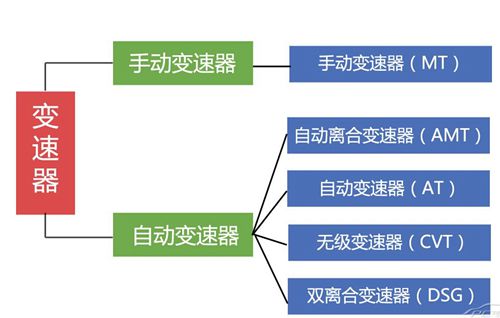
(3) According to the method of use: manual transmission (MT), automatic transmission (AT), automated manual transmission, continuously variable transmission (CVT), dual clutch transmission and EMT, AMT sequence transmission, etc.
1, MT - manual transmission
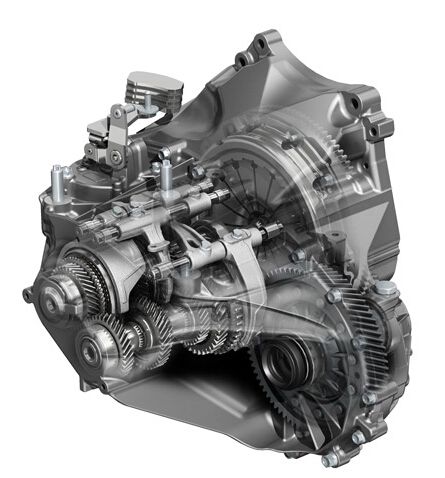
Analysis of the advantages and disadvantages of various types of transmission
Manual transmission
Manual models are by far the most mainstream models in the car market. At present, the technology of the manual transmission is very mature, and it is the power to drive the engine through the meshing of the gears. Because of its high transmission efficiency, simple structure and low maintenance cost, it is highly favored.
If the MT is skilled, the fuel economy is better than that of the normal automatic transmission model, and at the same time, it can fully enjoy the driving pleasure. However, it is not suitable for use in traffic jams in cities, and if the timing of shifting is not mastered, the fuel economy cannot be guaranteed if the oil is not well coordinated.
Features: Also known as mechanical transmission, that is, the shift lever (commonly known as "stop") must be used to change the gear meshing position in the transmission and change the transmission ratio to achieve the purpose of shifting.
Manual transmissions for cars are mostly four- or five-speed stepped gear transmissions, and usually use synchronizers for easy shifting and low noise. The manual shift must be stepped on during operation to allow the shift lever to be actuated. The manual transmission is relative to the automatic transmission. In fact, all cars used manual transmissions before the automatic transmission. The manual transmission is geared with gears of different sizes to achieve shifting.
Advantages: low maintenance costs, can bring driving pleasure. In general, the transmission efficiency of the manual transmission is higher than that of the automatic transmission. Therefore, if the driver has good technology, the manual transmission vehicle is faster than the automatic transmission when it is accelerating and overtaking, and it is also fuel-efficient.
Disadvantages: complicated operation, and driving in a bad traffic situation is more tiring.
2, AT - hydraulic automatic transmission
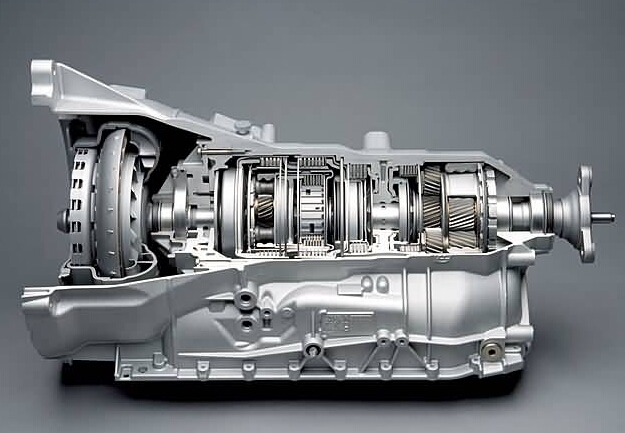
Analysis of the advantages and disadvantages of various types of transmission
Automatic Transmission
The automatic transmission is the power that drives the engine through the torque converter and the planetary gears, and the transmission efficiency is low and the economy is poor. At the same time, the planetary gear structure has a complicated maintenance cost.
Compared to manual transmissions, automatic transmissions make driving easy and easy to use. At present, the hand-in-one model is booming, and the traditional automatic transmission has been abandoned by more and more models, and has gradually been replaced.
Features: Automatic transmission, using the planetary gear mechanism for shifting, it can automatically shift according to the degree of accelerator pedal and the speed of the vehicle. The driver only needs to operate the accelerator pedal to control the speed.
In general, there are several types of automatic transmissions commonly used in automobiles: hydraulic automatic transmissions, hydraulic transmission automatic transmissions, electric transmission automatic transmissions, stepped mechanical automatic transmissions, and stepless automatic transmissions. The hydraulic automatic transmission is mainly composed of a hydraulically controlled gear shifting system, and mainly includes an automatic clutch and an automatic transmission. It can automatically shift gears according to the opening of the throttle and the change of the speed of the car.
Advantages: easy to operate and easy to use. The automatic transmission has the advantages of easy operation, comfortable driving and reduced driver fatigue, and has become a development direction of modern car configuration. A car equipped with an automatic transmission can automatically change the torque according to the road conditions, and the driver can concentrate on the road traffic without being disturbed by the shift.
Disadvantages: low transmission efficiency, poor economy; complex structure and high maintenance costs.
3, manual transmission AMT
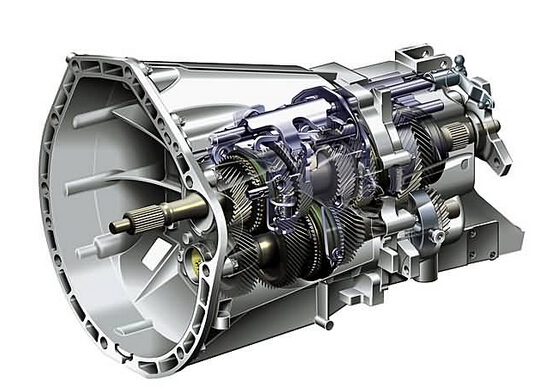
Analysis of the advantages and disadvantages of various types of transmission
Automatic manual transmission
The manual transmission is actually composed of an automatic transmission control system based on the manual transmission, so the operation is more flexible, the more the gear position, the more precise the control, and the better fuel economy. However, there is also a cost problem in the manual transmission. The price of this type of vehicle is often higher, and the maintenance cost in the future is also higher than that of the general model.
Features: The manual transmission is first introduced by the Porsche depot in Germany on the 911 model, called Tiptronic. It allows high-performance sports cars to be free from the constraints of traditional automatic transmissions, allowing drivers to enjoy manual shifting. Models equipped with an automatic manual transmission have "+" and "-" selection positions on their gears. In the D position, the downshift (-) and upshift (+) can be freely changed, just like the manual gear. Drivers can add and subtract gears in combination with road conditions and driving needs, so that driving experience can be improved.
Advantages: simple operation, easy to use, and good fuel economy. "Hand-in-one" is a shifting method that combines the manual shifting and automatic shifting of the car. The manual gear is relatively rich in driving pleasure because it can freely adjust the gear position and the rotational speed. At present, more and more advanced manual and manual transmissions are equipped in domestically produced vehicles. The most representative ones are: Tiptronic of Peugeot 307, Multitronic of Audi, and Durashift5 of Ford Mondeo.
Disadvantages: higher prices, higher maintenance costs.
4, CVT - stepless automatic transmission
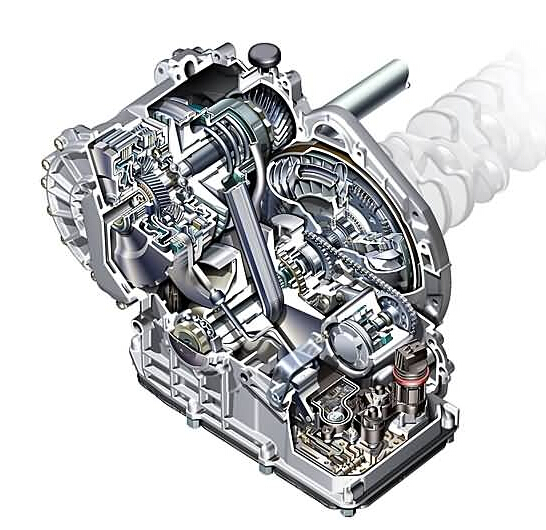
Analysis of the advantages and disadvantages of various types of transmission
Stepless transmission
The CVT uses a conveyor belt and a main and driven wheel with variable working diameter to cooperate with each other to transmit the power of the engine, representing the development direction of the automatic transmission. Its outstanding feature is that there is no sense of frustration when the traditional automatic transmission shifts, the acceleration continuity is better, and the fuel economy is higher. At present, there are still many imperfections, so there are not many models on the market with CVT transmissions (such as Scorpio, Sylphy, etc.), which seems to be a bit high and low.
Features: The continuously variable transmission system is composed of two sets of shifting discs and one transmission belt, which is simpler in structure and smaller in size than the transmission automatic transmission. In addition, it can freely change the transmission ratio, thus achieving full-speed stepless shifting, so that the car's speed shifts smoothly, without the "ton" feeling of the traditional transmission shifting.
Advantages: Comfortability, acceleration, economy and emissions are good. The biggest advantage of CVT is the speed ratio of the stepless control output. When driving, it feels like running water. Without the feeling of shifting, the acceleration will be faster than the automatic transmission. Since the unnecessary fluctuation of the rotational speed is reduced during driving, it is also beneficial for fuel economy.
Disadvantages: The technology is still not perfect; the price is higher and the maintenance cost is higher.
5, DSG - dual clutch automatic transmission
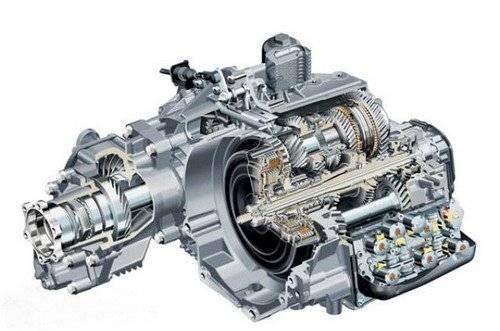
Analysis of the advantages and disadvantages of various types of transmission
Dual clutch transmission
DSG dual clutch transmission is one of the most concerned technologies in recent years. Its system is mainly composed of two sets of clutch plates, a dual clutch device, a double shaft mechanism composed of a solid shaft and its outer sleeve. And two sets of gears that control the singular and double gear positions. During the entire shifting process, when one set of gears is outputting power and the other set of gears is already engaged, the DSG always maintains a set of gears to output power without interruption of power transmission, thus ensuring acceleration. There is no frustration in the continuity and shifting process. This transmission combines the maneuverability and economy of the manual gear with the convenience of automatic transmission. It can be said that it is the most advanced transmission in China.
Features: The world's first DSG dual clutch transmission was launched by Volkswagen. The DSG regulates the combined pressure of the dual clutch through a battery Valve connected to the transmission control module. Engine power is transmitted to the dual clutch through the crankshaft and a dual mass flywheel. Clutch 1 is responsible for controlling odd gears and clutch 2 is responsible for controlling even gears and reverse gears. It is equivalent to combining two sets of shifting systems into one. The intelligent electro-hydraulic shift control system, dual clutch, dual power input shaft and three drive shafts included in the DSG transmission system work together to perform complex shifting operations. The control system commands the shifting gear to be “standby†in the gear position higher than the current sports gear position, and enters the working state at any time to realize the quick shifting, so that the entire shifting process is successfully completed in only a few hundredths of a second. .
Advantages: Accelerated continuity is very good, there is no frustration of shifting. The DSG dual-clutch transmission ensures precise power transmission with fast shifting, which makes the driving sporty and convenient, and more importantly, lower fuel consumption, and all aspects of performance exceed the traditional automatic transmission.
Brass Shower Faucet,Spring Pull Down Faucet,Kitchen Sink Taps,Kitchen Mixer Tap
Zhejiang minmetals huitong import and export Co., Ltd , https://www.zjminmetals.com
![<?echo $_SERVER['SERVER_NAME'];?>](/template/twentyseventeen/skin/images/header.jpg)